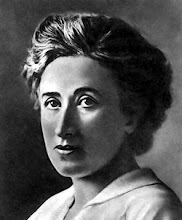Back to the real subject of this blog, the Digital Economy. My many thanks to Crikey whose Video of the Day today was this gem from 1981.
It makes the whole excitement of the Digital Economy and particularly digital media look a bit dated when you realise that was 28 years ago. A lifetime!!!!
I'd be interested in any other similar over-hyped stories of the online world from the recent past. I still recall many Internet pioneers (notably Tom Koltai) promoting the idea that the Internet would make telcos redundant. Did anyone mention Bigpond?
It does mean that we always will be wrong when we engage in technology (and application) forecasting, but that doesn't mean we shouldn't engage in consideration of scenarios.
Wednesday, January 28, 2009
Subscribe to:
Post Comments (Atom)




Oh they were faxing newspapers in New York before World War II although the war put an end to that.
ReplyDeleteHere's an archived item from Time Magazine dated Monday, Jan. 12, 1948
http://www.time.com/time/printout/0,8816,794158,00.html
In getting it started last week, Publisher Walter Annenberg's Inquirer beat John S. Knight's Miami Herald to the draw as the first U.S. newspaper to broadcast regular, daily facsimile editions to its readers. At week's end the Herald, whose first receivers were delayed by weather, got on the air too, for readers at a supermarket. The New York Times and a dozen other dailies were getting ready. They weren't quite sure where facsimile would lead them, but the press had once badly underestimated radio and television, and it did not intend to be caught napping again.
It Comes Out Clear. The air newspapers of Miami and Philadelphia were no immediate threat to opposition papers, because nobody had found how to make them pay. The gadget was not yet a threat to the peace & quiet of the home, because a receiver still cost $600 to $900. But time and mass production might take care of all that; the big news about "fax" was that, technically, the bugs were pretty well worked out of it. Editors still had a lot to learn about type and makeup for an 8½ in. by 11 in. page. But the sheets turned out last week (at the rate of four pages in 15 minutes) were clear and readable, with cuts as finely detailed as in offset printing.
Facsimile had been a long time coming. Among others, Inventors John V. L. Hogan and William G. H. Finch, who have rival systems, have worked on it for 20 years. In the 1930s, the St. Louis Post-Dispatch, Columbus Dispatch and other dailies experimented with it, but reproduction was slow and the carbon-paper product didn't seem to have a future. The war interrupted research; in 1944, eight radio stations and 17 newspapers, linked as Broadcasters Faximile Analysis, matched $250,000 of Hogan's money to get it going again.
-----------
Fax or facsimile is nothing new.
http://en.wikipedia.org/wiki/Fax
Scottish inventor Alexander Bain is often credited with the first fax patent in 1843. He used his knowledge of electric clock pendulums to produce a back-and-forth line-by-line scanning mechanism. Frederick Bakewell made several improvements on Bain's design and demonstrated the device at the 1851 Great Exhibition in London.
========
I don't believe he's a relative :-)
I do have some futuristic material of how the computer would transform life in the year 2000 but it is copyright and I'm not sure where I'd upload it to. It was way off beam. Way way off beam... (sigh)
I posted a link to this YouTube video to the ELSIC (Economic Legal and Social Implications Committee ) mailing list of the Australian Computer Society on 31st October 2007.
ReplyDeleteThe 21st Century: What will it look like?
http://www.youtube.com/watch?v=c1KEFgD6Dtg
Karsten Staack made this video for some events in the Detailed Roadmap of the 21st Century (http://www.cc.gatech.edu/~pesti/roadmap /)
"Electronic Life form given basic rights"
"Machines claim to be conscious"
"These claims are largely accepted"
"Colony of smart bacteria assembled"
"IQ equals human IQ"
"Hybrid of biological and electronical mental processes"
"Space Elevator"
"The Sims Game" with real genetics
"Desktop computers with the computing capacity of one human race"
"There is no longer any clear betwen humans and computers"
From the Australian Computer Society YouTube Channel
The potential of Australia's ICT practitioners
http://www.youtube.com/watch?v=c4bNYES_4FU
The potential of Australia's ICT practitioners to really shape the future of the world (Philip Argy, President of Australian Computer Society)
The ACS invited ministers and potential ministers to debate a vision statement - including Senator Conroy and Helen Coonan.
You can listen to their responses on the ACS YouTube channel.
Philip was president of the ACS for a number of years.
You may wish to note the following:
ReplyDeleteDigital Economy Future Directions
A consultation paper on the Digital Economy Future Directions
http://www.dbcde.gov.au/__data/assets/pdf_file/0006/94191/Consultation_Draft_-_DEFDP_-_17_Dec_2008_final.pdf
This is a very important paper covering issues such as:
* Open access to public information
* Privacy
* development of digital skills
* regulatory framework including copyright
* measurement
* internet filtering
(referred to at various places in the document).
Responses are due to
DEFutureDirections@dbcde.gov.au
by Wednesday 11 February 2009.
Bob